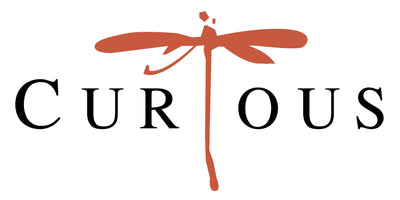Red Light District: Why Your Personal Lubricant Is Risky

The marketplace is glutted with cheap lubricants, personal moisturizers and intimate skincare products that not only fail to meet the performance needs of women, most are actively harmful to our health.
Intimate wellness is significantly founded on a complex and delicate interplay between the biochemistry and microbiome of the vagina. Thoughtlessly formulated products, laden with disruptive ingredients, wreak havoc and interfere with this crucial balance. They cause general misery and corrupt our intimate wellness with the imposition of pH imbalance, infection, irritation, inflammation and pain- and introduce chemicals that create long-term risks to our health.
Here are some of the biggest offenders:
1. Petroleum / Mineral Oils
Petroleum and petroleum-derived oils are non-nutritive and thickly coat the vaginal tissues, significantly altering both healthy biochemistry and vaginal microbiome. One study showed that 40% of women who use petroleum ingredients on intimate tissues have bacterial vaginosis. Functionally, this stuff is goopy and heavy and interferes with the good kind of friction, and is dang near impossible to remove after sex/massage without a bar of soap and a Brillo pad.
The Environmental Working Group database lists polycyclic aromatic hydrocarbons (PAHs) as impurities in petroleum-based products with a Level 9 Hazard rating. PAHs are a byproduct of the manufacturing process, to which the following relevant toxicities are attributed: Cancer, Developmental/reproductive, Allergies/immunotoxicity, Persistence and bioaccumulation in humans, Endocrine disruption and Organ system toxicity (non-reproductive). Nasty stuff.
2. Silicone / Silicon Polymers
Usually dimethicone, dimethiconol or anything ending in “-icone”, silicones do feel light and silky- we like that – but these synthetic ingredients present some very real and difficult-to-resolve issues for women’s health and offer no moisturization or nutritive benefit. First, silicones have MSDS warnings for potential organic toxicity. Second, the function of the ingredient itself is a significant impediment to health and intimate cleanliness.
Here’s how it works, why it lasts so long, and why it’s a big problem: Silicone ingredients coat and adhere strongly to surfaces. That’s why they’re used in hair conditioning agents, especially those intended to smooth and shine hair. Both in the vaginal vault and the exterior vulva, the ramifications of this feature are highly problematic. Silicone effectively interferes with the healthy function the vagina, by disrupting pH, microbiome balance and tissue health, which is crucial for intimate cleanliness and structural integrity of the mucous membranes. There’s a very high price to pay for silicone lubricants, and it’s not worth our health.
3. Synthetic & Natural Waxes
The quantity of wax required to create a balm- also referred to as a salve- is far too occlusive (that means it creates a waxy coating barrier) for use on vaginal and vulvar tissues, without risking reducing critical cellular turnover, which in turn raises pH, diminishes elasticity and prompts yeast and other microbial infection. It may bring short-term relief from irritated tissue, but causes issues and doesn’t support the body in promoting cellular health.
So, these first three ingredients are problem-causing for essentially the same reason- they coat genital tissues and effectively interfere with cellular turnover and pH balance, and cause lots of trouble in the biochemical downstream of both. Some are additionally concerning in terms of overall toxicity.
4. Glycerin/ glycerol
While the sugar alcohols in glycerin don’t directly feed Candida yeast, there’s debate about more complex processes resulting from the presence of glycerin supporting yeast overgrowth. It certainly promotes bacterial and fungal infection due to other features. It is often claimed that glycerin moisturizes skin, while in fact – when used in the higher percentages used in intimate products - glycerin is dehydrating and causes irritation and inflammation. It dries skin and mucous membranes in higher percentages because it actually draws water to itself and out of tissue. And, since it accompanies water in the formula, refer to #6 for the problems presented by broad-spectrum antimicrobials. Functionally, glycerin is thick, and sticky, and it feels and tastes artificial.
5. Gelling Agents & Gums
Xanthan gum, acacia, guar, carrageenan, agar, cellulose (made from wood pulp): these are found in many personal moisturizers, lubricants and hygiene products. A water-based product doesn’t provide any authentic lubrication- it’s just gelled water- and generally becomes increasingly frothy as it breaks down into gunky, gelling-agent particulate matter. Weird bits of something inexplicable. It’s unattractive, a bit awkward - “Ummm, is that you or me?” - and ends interest in oral sex. Yikes.
It’s also important to remember that most of these gelling agents contain carbohydrates that feed the i ntimate microbes more than allowed for maintaining balance, so once again, this contributes the the harmful biochemical cascade of unfortunate events the wrecks havoc with vaginal function.
6. Broad-spectrum Antimicrobials
With a few exceptions, water-based products necessarily use parabens, phenoxyethanol, potassium sorbate, sodium benzoate and other broad-spectrum antimicrobials that interfere with the necessary balance of a woman’s vaginal ecosystem and cause all manner of disruption. The relationship between a women’s microbiome and the health of her vagina are intrinsically interwoven.
7. Phenoxyethanol
An oily substance made from organic chemicals which is often used as a preservative or as a processing add used to add fragrance to a lubricant. Phenoxyethanol can be harmful if absorbed through skin, and is identified as a cause of reproductive damage. The breakdown of phenoxyethanol releases phenol, which can adversely affect the immune system. The Environmental Working Group (EWG), a nonprofit research organization, lists phenoxyethanol as a moderate hazard, with links to toxicity and skin irritation.
8. Parabens
Parabens are used to preserve all variety of products, including body care/ cosmetics, pharmaceuticals, foods and beverages. It’s been long argued by manufacturing industries that in order for a paraben to induce estrogenic effects, exposure levels would have to be relatively high – much higher than the levels usually found.
A study published in Environmental Health Perspectives casts doubt on this argument, suggesting that parabens may have adverse effects at far lower concentrations than was previously thought. The study shows that when adding growth factors that are naturally found in breast tissue, the estrogenic effects of parabens are increased. This means that parabens exert endocrine disrupting effects at exposure levels well below that which was previously thought.
The work not only supports the contention that parabens are a risk factor for breast cancer, it emphasizes the limitations of testing individual chemicals for their detrimental effects on cells. Real life exposure never occurs in isolation, and it appears that endocrine disrupting chemicals (EDCs) in combination with other chemicals, including those naturally found in cells, contribute to significantly heightened endocrine disruption. Common sense indicates that other endocrine disrupting chemicals thought to require unrealistically high doses to exert their effects may also have increased potency in the accumulated presence of other chemicals.
Common parabens include methylparaben, ethylparaben, propylparaben, butylparaben and heptylparaben. Less common parabens include isobutylparaben, isopropylparaben, and benzylparaben. Arguably, the manufactured preservative Lonicera Caprifolium - marketed as a safe alternative to parabens and labeled as Plantservative, Japanese Honeysuckle, Honeysuckle flower, Honeysuckle extract, etc- is just a paraben by another name. This is debated, as illustrated in a series of opinions and counter-opinions published by the Organic Consumers Association. According to Curious formulator Elizabeth Moriarty, “The parabens present in their whole, natural state do not have the paraben concentration necessary to provide preservation... further, isolated synthetic and natural parabens are bio-identical, and we have no evidence to show that concentrated natural parabens areany less toxic than concentrated synthetic parabens.
9. Propylene glycol
Propylene glycol is a small organic alcohol commonly used as a skin conditioning agent. It has been associated with irritant and allergic contact dermatitis as well as contact urticaria in humans; these sensitization effects can be manifested at propylene glycol concentrations as low as 2%.
10. Chlorhexidine
This ingredient boasts “antibacterial” properties, which may sound like a good thing, but we refer back to the issues that come with the use of potent broad-spectrum antimicrobials- they interfere with crucial intimate ecological balance. It’s also known to be irritating to delicate vaginal and vulvar tissues women and can result in inflammation and itching.
11. Polyquaternium-15 Quaternium-15
A quaternary ammonium salt used as a surfactant and preservative in many cosmetics and industrial substances. It is also a formaldehyde-releasing preservative. Formaldehyde is a know to cause skin irritation and allergic reaction even at very small concentrations. Despite the obvious toxicity of formaldehyde, Quaternium-15 / Polyquaternium 15 is commonly found in hair care, skin care, shaving products, eye care, household cleaning products - and yes, personal hygiene, moisturizers and lubricants.
12. Nonoxynol-9
Nonoxynol-9 is a spermicide included in some lubricants, condoms and sex toy cleaners. It was once believed that Nonoxynol-9 helped kill the HIV virus, however, a recent research indicates that Nonoxynol-9 actually doesn't protect against HIV. Nonoxynol-9 has been shown to cause abrasions, lesions, and micro tears in the vagina. It also damages the rectal lining in the anus. As a result, in both cases, using Nonoxynol-9 can increase the chance of contracting an STD or getting an infection.
In addition to killing sperm, Nonoxynol-9 kills microbes in the vagina. Once again, this is yet another ingredient routinely and indiscriminately used in personal lubricants that can easily knock the vaginal ecological balance off kilter and lead to all manner of miserable symptoms, or worse, hard-to-recover conditions like BV (bacterial vaginosis.) If this isn’t enough, Nonoxynol-9 is also responsible for causing inflammation and irritation in many women. Of greatest concern is the studied association between Nonoxynol-9 and cancer
13. Poorly Selected Natural Oils
Natural oils are tricky, because while some are nutritive, they are often very greasy. Greasy oils – again – coat tissues and disrupt the essential pH and microbial balance needed for a healthy vagina. Additionally, they’re over-lubricating and heavy, reducing the friction we desire and quite literally interfering with the flesh-to-flesh experience with so much weightiness. They’re just messy, and not the good kind.
Curious Intimate Skincare are the only intimate skincare available that includes an array of potent plant oils and extracts that rejuvenate, nourish, and protect intimate tissues, in formulas that deeply contemplate the science of a woman’s physiology in tandem with respect for a woman’s sexual needs.
All ingredients are GMO free; and free of irradiation, ethoxylation, sulphonation, and chemical extraction. We use certified organic ingredients when they exist; when not, we use certified therapeutic grade materials. All ingredients are natural and naturally processed.
Curious and its products and materials are not intended to treat, diagnose, cure or prevent any disease. All materials published by Curious are provided for educational purposes only. Please seek the advice of a qualified healthcare provider for any questions you have regarding a medical condition.
Curious is a registered trademark of the Luminary Medicine Company



Comments on this post (2)
Hi Charlotte!
Yes, Curious is perfectly fine to use with silicone toys!
— Curious Customer Service
For cripes sake, where do I find out if I can use it with silicone sex toys?? That should be front and center, can’t find.
— Charlotte